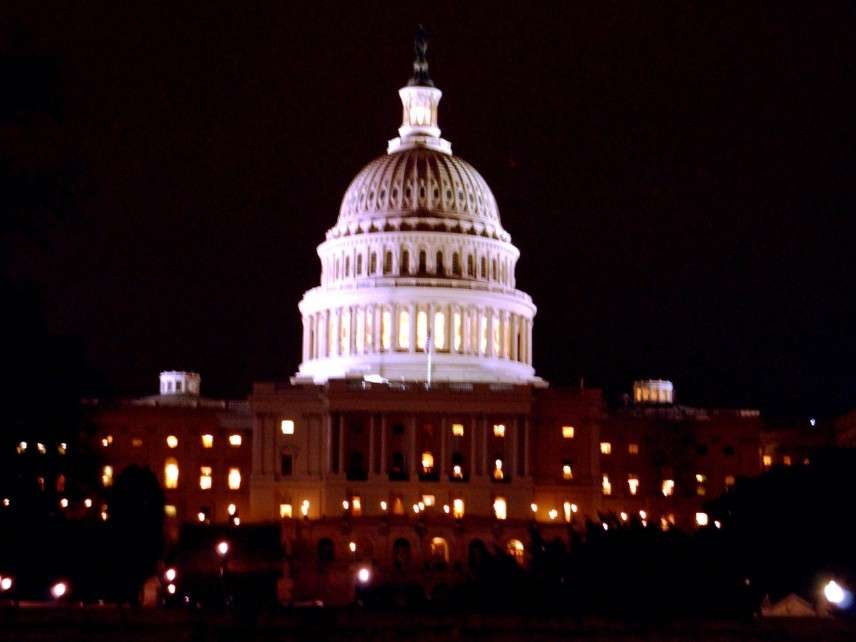CBO: Budget Deficit Numbers Are Better Than Expected, but We're Still Screwed
Unless we make some big changes, things won't get much better.

A new report from the Congressional Budget Office (CBO) highlights several troubling trends in federal spending.
The CBO projects that the deficit for fiscal year 2019 will hit $897 billion. While this represents a $118 billion increase over last year, it's actually not as bad as expected: The nonpartisan office predicted last April that the budget deficit would reach $981 billion in 2019 and surpass $1 trillion in 2020. "That reduction in projected deficits results primarily from legislative changes—most notably, a decrease in emergency spending," the CBO says in a summary of its findings.
But that's just about the only good news. The deficit is expected to hit $903 billion in 2020 and $974 billion in 2021. In 2022, it is on track to surpass $1.1 trillion.
The rising budget deficit means the national debt, which reached $22 trillion at the end of 2018, will continue to go up as well. The amount of publicly held debt—the money the American government owes to domestic and foreign investors—will be particularly affected, rising to $16.6 trillion at the end of the 2019 fiscal year.
"Relative to the size of the economy, that amount—at 78 percent of GDP—would be nearly twice its average over the past 50 years," the report notes. "By 2029, debt is estimated to reach $28.7 trillion, or 93 percent of GDP—a higher level than at any time since just after World War II." Publicly held debt could reach "about 150 percent of GDP by 2049."
So what's to blame? It's simple: The amount of money the federal government takes in isn't keeping up with the amount it spends. Revenues are projected to rise from $3.5 trillion in 2019 to nearly $5.7 trillion in 2029. But expenditures will rise faster, from $4.4 trillion in 2019 to $7 trillion in 2029.
The biggest culprit is mandatory spending—most notably, Social Security and Medicare—which is projected to rise by about $1.9 trillion from 2019 to 2029. "The aging of the population and the rising cost of health care contribute significantly to the growth in spending for major benefit programs," the report says. Yearly Social Security spending is projected to rise from roughly $1 trillion to $1.9 trillion over the next decade. Medicare spending will nearly double, rising from $768 billion to $1.5 trillion in 2029.
This sort of spending is not sustainable. Both programs will be insolvent within the next 15 years unless major changes are made.
Unfortunately, very few politicians seem interested in cutting spending. Donald Trump explicitly promised during his presidential campaign not to cut Social Security or Medicare spending. Even former House Speaker Paul Ryan (R–Wisc.), a supposed budget hawk, was a complete failure when it came to balancing the budget.
Bonus link: Why trillion-dollar deficits are here to stay.
Show Comments (29)